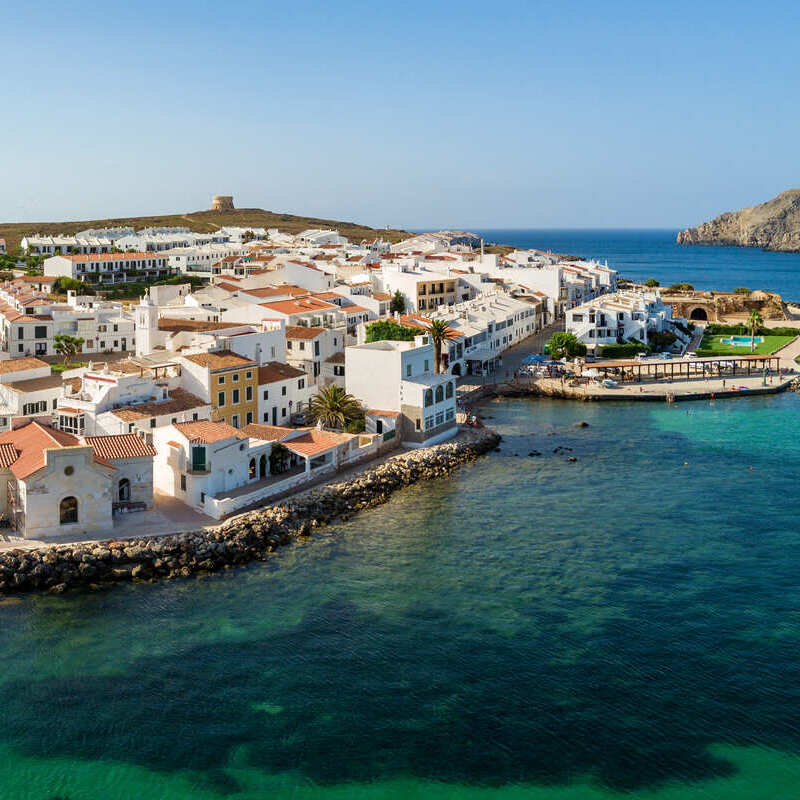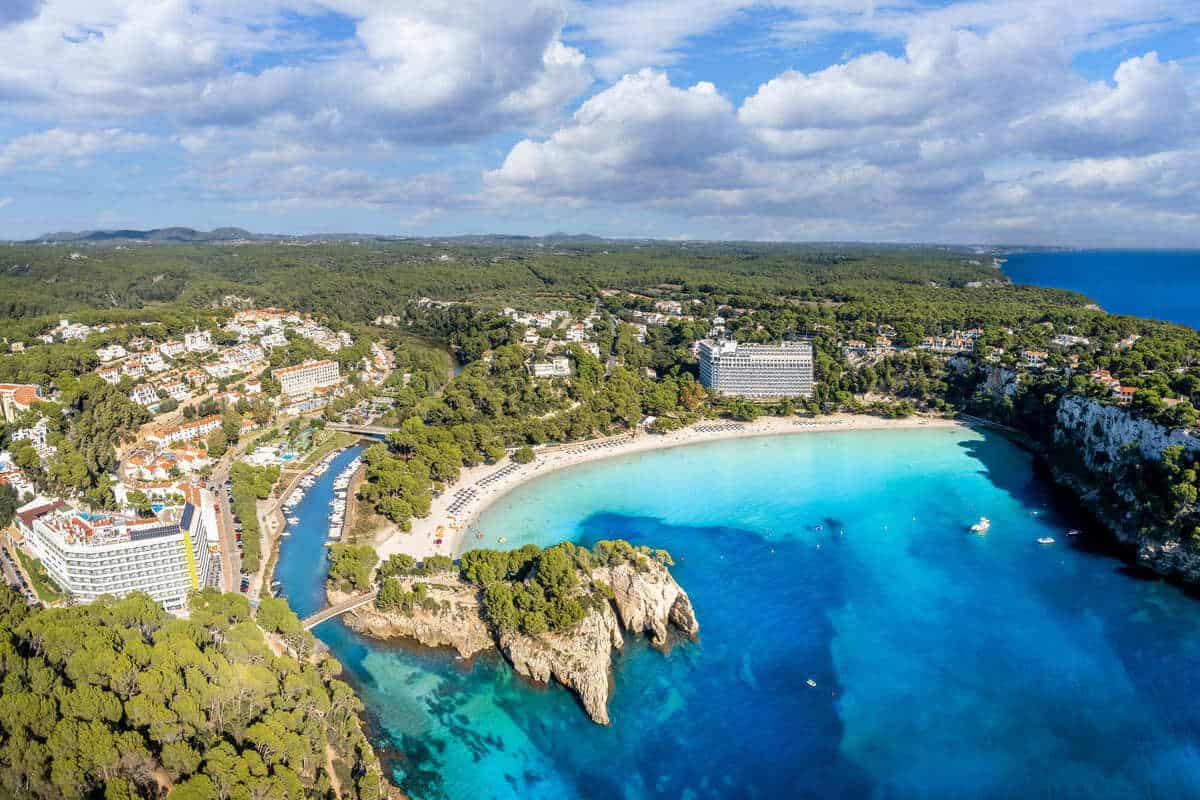No other country can claim the title of world’s summer capital but Spain.
It has the balmiest temperatures, the longest uninterrupted sandy coastline anywhere in the Mediterranean basin, and it’s essentially a tropical country disguised as European.
Like, have you checked the temperatures in Costa Del Sol lately?
Hint: it’s already scorching hot.
Spain has no shortage of holiday islands, however, with Tenerife, Gran Canaria, Ibiza and Mallorca all leading booking trends among sunseekers, but there’s one lesser-known island in particular that seemingly has it all.
It’s coastal, it’s cultural, it’s offbeat, and it’s relatively affordable.
According to National Geographic, Menorca is the best beach destination in the Iberian country, and we’re inclined to agree…
The Most Gorgeous Small Island In Spain

As the name indicates, Menorca is Mallorca’s baby sister, located roughly 43 miles northwest of the larger neighboring island and measuring only 267 square miles.
Yep, it’s pretty small, but that’s not to say it lacks cultural value, nor natural beauty, for that matter.
Menorca is famous for its verdant, vineyard-dotted hinterland, Maldives-like powdered-sugar sands bounded by turquoise waters, and ancient cobbled towns with origins lost to time—or at least attributed to Greek or Roman settlement of the island—that remain unspoiled.

Last year, the Balearic Islands group, which comprises not only Mallorca and Menorca, but also Ibiza and Formetera, hosted a record 14.4 million tourists.
Perhaps unsurprisingly, the vast majority of those are flocking to Mallorca for the all-inclusives or Ibiza for the party scene.
Alongside the equally-tiny Formentera, Menorca is one of the least-visited islands in Spain, having recorded only 1.6 million guests in 2023, a large percentage of whom are holidaying Spaniards: it remains somewhat concealed from prying foreign eyes.
Most Americans Are Yet To Discover Menorca

Don’t get us wrong: it is still relatively popular, particularly among Europeans, and there’s always a chance beaches will be crowded once Mallorca day-trippers and cruise guests start coming, but it is undoubtedly far less busy than other Spanish islands.
To put it simply, there are no mass protests staged to try and curb overtourism in Menorca, at least for now, and as National Geographic claims, there’s no better destination for relaxing by the beach and basking in the Mediterranean sun than Menorca:

Some of the most beautiful beaches—or as the locals prefer to call them, calas—in Spain are, in fact, here, including Cala Turqueta, with the clearest water you’ve ever seen, and the secluded, development-free Cala Macarelleta, found at the end of a rugged, but lovely downhill hike.
In Cala Blanca and Cala Santandria, you’ll even find a host of beachfront hotels catering to an international clientele, waterside bars and restaurants and family-friendly facilities, and somehow, they never feel awfully crowded as you would expect them to be.
An Island For The Culture Enthusiasts

This is an island in the Ancient Sea, after all, so it goes without saying that, much like its Italian and Greek sisters, Mallorca is a cultural hotspot of the first order:
The coastal, compact capital Mahón is surrounded by medieval walls and traversed by cobbled streets, while the equally-charming, fortified Ciutadella, the fishing village of Alaior, and the historic port of Binibeca are three of several quaint towns that look almost frozen in time.
If it’s ruins dating back thousands of years that make your heart beat faster, you should add the archaeological complex of San Morell Nou to your wishlist, a vast site that once served as a necropolis in prehistoric times.

Besides the peaceful coastal atmosphere and cultural landmarks, Menorca is famous for its cuisine.
It’s not a Menorcan beach getaway until you’re lounging by the poolside, gorging on muxama salad and cubes of Mahón cheese and washing it down with a glass of Sant Lluìs-produced, velvety red wine.
It is the literal dream destination for every foodie, as the Mediterranean-based diet is exclusively comprised of locally-sourced fresh ingredients—none of the processed meats and toxins America’s multi-billion-dollar food chains force-feed you—healthy seafood and fruit.

Without question, our go-to Menorcan dish is Caldereta de Langosta, a seasoned lobster stew commonly served in restaurants in Ciutadella, and it’s not like vegetarian or vegan travelers are left out, either: one of Menorca’s signature delicacies is Pa amb oli, toasted bread layered with garlic and olive oil.
Mallorca Isn’t That Expensive, Either
From single rooms in modest, centrally-located hotels, to luxurious spa resorts in more recluse locations, there’s plenty of accommodation options in Mallorca that fit every budget, with prices ranging between only $90 and $415, depending on location and level of comfort.

In general, though, you should plan on spending $149 on hotels per night and an additional $48 on meals daily, bringing the total cost of a one-week getaway to Menorca, flights excluded, to a very reasonable $1,039.
In comparison, a 7-night stay in Santorini can cost a whopping $2,995 in the worst-case scenario.
Credit: Source link

